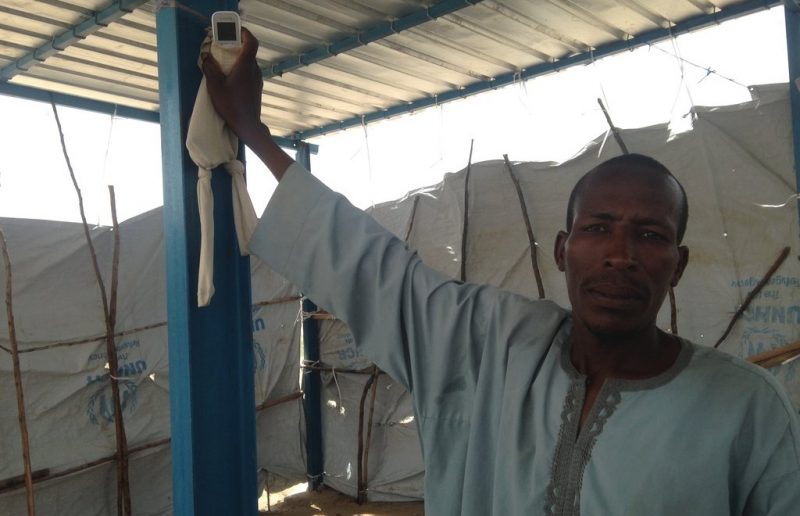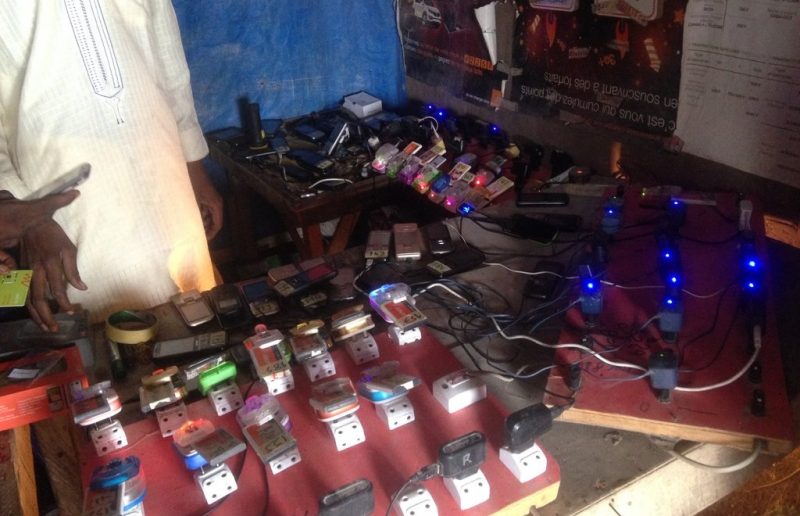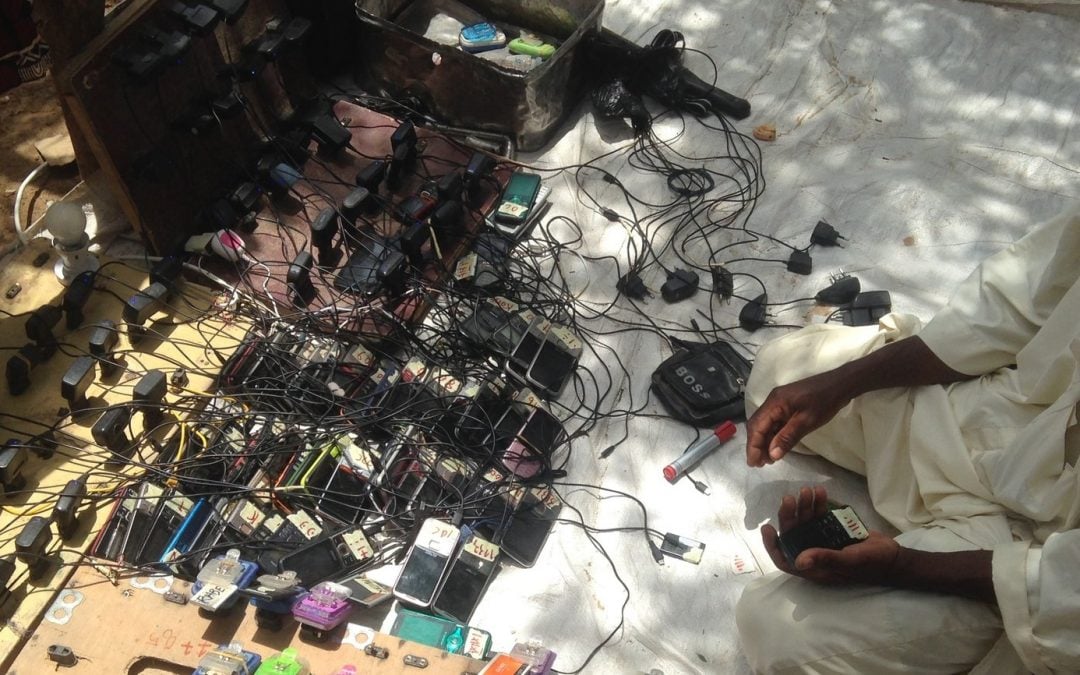“Never assume you know the communications eco-system – never think you know how people share information and which sources they trust better than community members themselves”.
These were the words I found myself repeating in South Sudan, whilst supporting the recent CDAC Network Communicating with Communities (CwC) training. The importance of understanding the communications and media ‘landscape’ of a context or country has been well established by the #commisaid community. It is a key activity in terms of practicing what we preach – namely: listening. As it is such an essential process, a significant amount of time is often dedicated to Information and Communications needs assessments during CwC trainings
From UNHCR Innovation’s perspective, learning directly from the people we’re innovating with and for is critical. Therefore, the Emergency Lab’s first missions to an operation include an initial scoping – a rapid communications assessment – to help us develop a better contextual understanding. In late July I travelled to Diffa, in Niger, to support the UNHCR operation and partners to strengthen their communication with communities – starting with a scoping. There, I discovered an unexpectedly diverse communications eco-system.
Unexpected? In Niger, I recognised that I only partly practice what I ‘teach’.
The ongoing repeated violent attacks by Boko Haram, that started in Nigeria and have spread across the Lake Chad basin, have caused multiple population displacements. As of 30th July, there were over 187,000 Nigerian refugees displaced to countries in the Lake Chad Basin region, with many hundreds of thousands internally displaced by fighting – including within the Diffa region, where the displaced population is estimated at over 240,000, including refugees, returnees and IDPs.
As the UNHAS flight flew from Niamey to Diffa – over several hours of flat semi-deserted Sahel – I was already pre-empting solutions for the team. What was going to be feasible in this low-infrastructure, low-tech context with limited communication channels? I was already assuming I knew the communications landscape – and at 7,000 metres I definitely wasn’t designing with refugees.
During my mission in Niger these assumptions were certainly challenged. Here are a couple of examples why:
The mobile phone and a pair of tights: a simple way to connect the community
As the plane landed in Diffa, several cell sites were visible and I had 3G coverage on my phone; better than expected but I was cynical that this coverage would reach the dispersed sites where refugees and internally displaced people were staying in their thousands. The next day, I travelled almost 2 hours to Sayam Forage, a camp opened in December 2014 and now home to almost 5,000 refugees. I was surprised to find coverage at the site – although patchy in places. During a discussion with a group of elder men, they explained the importance of making calls for maintaining connections and confirming that loved ones were still alive. Despite the critical role the mobile phone plays, ownership is limited. Many people described that their phone had been lost during flight, or exchanged for food and other essentials. Across the different groups I spoke to, individual ownership was at a maximum of 40%.
To overcome this challenge, an ingenious system to allow information to be cascaded from a central point had been created by the refugees – out of a child’s pair of tights. The tights were strung up against a metal pole to create a sack for a few phones to be cradled – this boosts the antennae and maintains connectivity. The cradled phones belong to traditional elders whose numbers are known and shared by the community. An external caller can dial the number and then runners – younger members of the community – spread word in the camp to connect the caller with the recipient. Keeping the phone central means that it is always on. It was fascinating to see how the phone had such a fundamental role that had been so well assimilated into traditional communications structures. This is syncretism at work and certainly forced me out of thinking I was in a no-tech environment.

One of the community elders in Sayam Forage, demonstrating the phone and tights communication system.
Don’t ignore the features of a feature phone
Access to credit – buying ‘top-up time’ – was highlighted as a challenge by many refugees I spoke with. I met a group of young women (aged from 15 to approximately 30) who described how they hadn’t had credit on their phones for a number of weeks. I’d initially thought this meant they couldn’t buy credit to use other community member’s handsets, but was surprised that this group polled the highest in terms of individual phone ownership – higher than the male group of the same age range. Another ‘gender’ assumption of mine corrected.
Despite not having credit, the young women went on to describe how important their phones were for communication and for creating ‘connections’. The women used the phones to play Hausa, Hindi, and English music videos and songs that were stored on memory cards – watching in groups and sharing the enjoyment. They highlighted this as essential for their wellbeing, as there is little other entertainment on the site. The importance of sociality cannot be underestimated considering the scale of violence many have witnessed. The women shared memory cards, had made new friends and felt connected with the outside world –thanks to the non ‘credit-dependent’ features of the feature phone. This made me realise the importance of digging deeper into mobile phone usage – the preferred features, the valued functions. We’re a long way away from understanding the communications eco-system if we look at phone ownership alone. We can’t assume that people use their phone for voice calls – I certainly don’t!

A mobile charging station at a market near Kabelawa Camp. Kabelawa is home to not only refugees, but IDPs and returnees.
Communication cannot be cookie-cutter
These are just two examples of the fascinating and rich communication structures I found in Niger. The scoping unpacked many more – the importance of phone-in radio shows; a trans-regional free postal network; languages I’d never heard of; and entrepreneurial ways to charge mobile phones – to name a few more. After 10 days of discussions with refugees, internally displaced people, UNHCR partners, and the UNHCR team, I’m not pretending to be a Niger communications expert by any means. I have however learnt a lot – mostly that any of the pre-cooked ideas that I flew over with were irrelevant (at best). During this mission, I’m happy to say that I went back to the drawing board – this time with refugees.
We’re always looking for great stories, ideas, and opinions on innovations that are led by or create impact for refugees. If you have one to share with us send us an email at [email protected]
If you’d like to repost this article on your website, please see our reposting policy.

